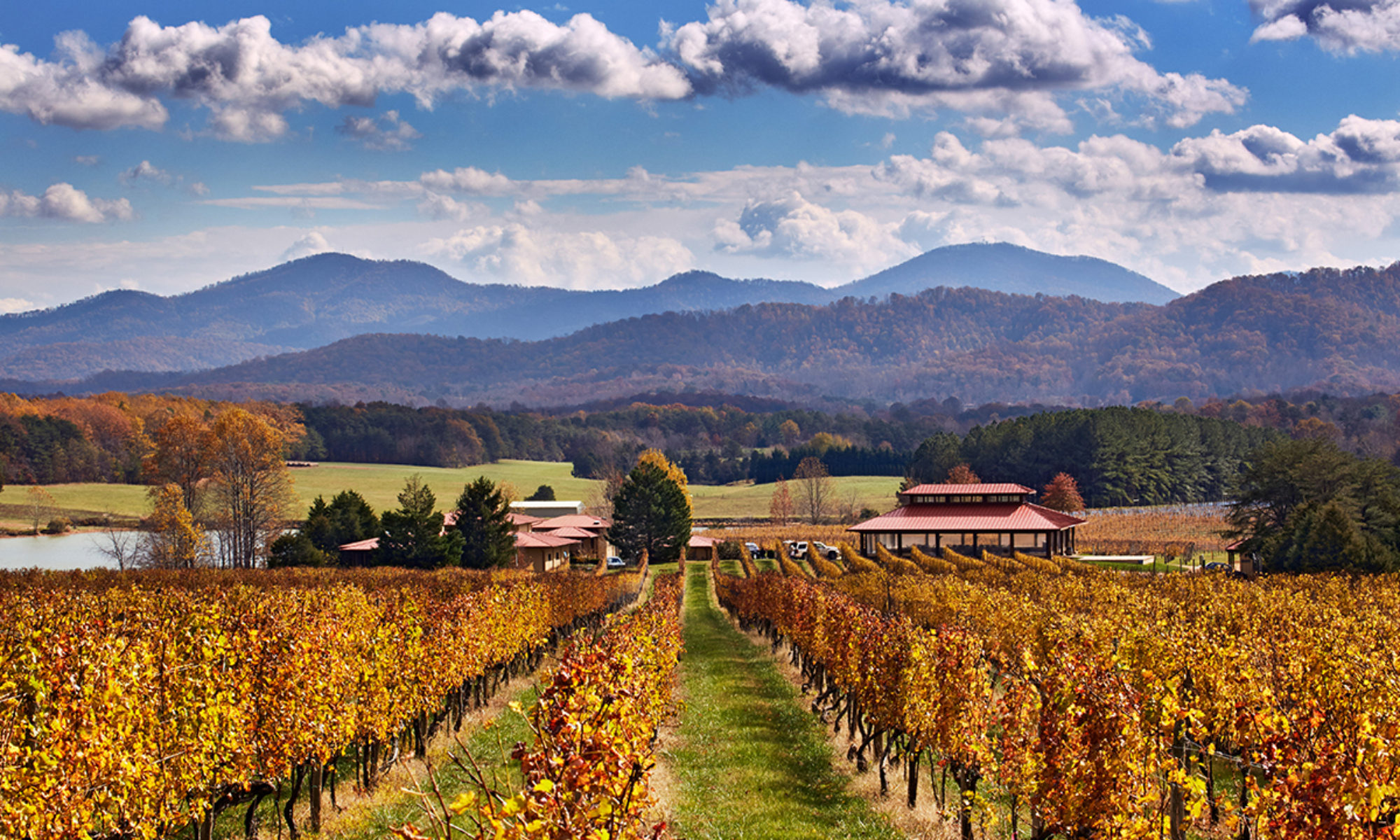Located at the top of Chestnut Mountain, some 30 minutes southwest of Roanoke. James and Debra Vascik, both with medical backgrounds and lovers of Wagnerian opera, purchased what was Mountaintop Orchards in 1994 and renamed it for the home of Viking gods. The 60-acre property now includes some 20 acres planted with grapes, and a barrel cave built 60 feet underground. The winery was on the market for sale from at least 2013 to 2015, then for $3.5 million, but does not appear to have been sold.
Wine. Tier II. The winery specializes in bold red wine styles, and all wines are estate-grown. Valhalla offers visitors the opportunity to taste significantly older vintages than most wineries do, with some wines up to a decade old. Valhalla wines received superb reviews in their early days, including a Governor’s Cup award back in 2000, and has accumulated hundreds of medals at tasting competitions. However the winery has not entered any major tasting competitions over the last several years, and relative wine quality is harder to gauge today. Of particular interest are a pair of “operatic” wines, the Valkyrie (a Bordeaux-style blend) and the Gotterdammerung (from Cabernet Franc), and the unusual Alicante Bousquet.
Setting. Two stars. Superb views from 2,000 feet of altitude from the top of Chestnut Mountain overlooking Roanoke and its valley from both the tasting room and the stone-covered patio. The tasting room is in a 2,800 square-foot chalet built by the Vasciks, and includes a fireplace. There is also an outdoor fireplace for cooler days. Live music frequently on offer. No food for sale, but picnics and Bring Your Own food encouraged. Note that the drive to the property is a long and winding road up the mountain. Very mixed reviews on tasting room staff: some days reviewers have been very pleased, others report negative experiences.
Stories: The Wilderness Road. Valhalla Winery’s marvelous view includes the city of Roanoke down in the valley below. Roanoke, today the largest city in southwestern Virginia, was originally named “Big Lick,” for a large outcropping of salt which drew wildlife to the site on the Roanoke River. Big Lick, in the 18th and early 19th centuries, was one of the most important junctions on the Great Wagon Road, which led from Pennsylvania down into the Carolinas. Hundreds of thousands of settlers took this road, primarily Scotch-Irish and German immigrants, many of them staying to form new villages and towns along the way. The Great Wagon Road proceeded through what is today called the Great Valley, east of the main Appalachian Mountain chain, but west of the also imposing Shenandoah and Blue Ridge Mountains of Virginia. At Big Lick, travelers coming down the Great Wagon Road faced a major choice, between two roads which forked off in different directions. The main branch, which came to be called the Carolina Road, headed left at Big Lick, taking people, horses and wagons through a gap in the mountains to the eastern side of the Blue Ridge, proceeding from there to the major cities of North Carolina, and eventually Charleston. A second branch, starting here at Big Lick, heads southwest – along the path of what would eventually become Interstate 81, but which was then all wilderness. This second branch which travelers could choose was christened “The Wilderness Road.” It was opened in part by Daniel Boone in the late 1700s. The Wilderness Road made its way through the upper New River Valley, and from there to the Holston River in the upper Tennessee River watershed, where the town of Kingsport, Tennessee, was founded near the Virginia border. From Kingsport the Wilderness Road led back northwestwards, into newly explored Kentucky Territory. From Valhalla one can’t see quite all the way into Kentucky, but one can imagine below the beginning of the old road there, and the adventures of those early settlers setting out from the Roanoke Valley below, looking to start their new lives.
